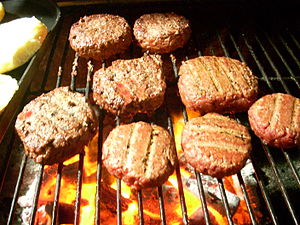The only thing hotter than Arizona this time of year is the great local food for grilling you can get from the farmers market and grocery store. From steak and eggplant to chicken and asparagus, Arizona farmers provide the ingredients you need to turn a backyard barbecue into a memorable meal. Just make sure your meal is memorable for the right reason. Grilling is great but it comes with some safety hazards that aren’t present when cooking in the kitchen. Follow these safety tips and grilling guidelines to make sure the thing everyone is talking about after your cookout is how fantastic the food was.
At the Grill
According to the U.S. Consumer Product Safety Commission (CPSC), 30 people die and hundreds are injured each year by improper use or handling of grilling equipment. In order to be safe, the CPSC recommends that the following safety checks be completed on a regular basis.
- When using a gas grill, make sure the tubes leading from the gas source into the burners are clear. These tubes can become blocked by a variety of things resulting in an explosion or fire.
- Before turning on your gas grill each time, check the hoses to ensure they are supple, solid, and free of leaks.
- Read the owner’s manual so you know how to identify a gas leak and an improper connection and what to do if your grill is leaking gas.
- Never use a gas grill indoors.
- Maintain a safe distance between your grill and any structure. Keeping the grill at least 10 feet from flammable buildings and materials reduces the risk of fire.
- If you suspect there is something wrong with your grill, the tank, or the valve that connects the two, don’t attempt to fix it yourself. Seek the assistance of a professional.
- Do not leave a gas tank in a hot car or trunk.
- Charcoal grills produce carbon monoxide when they burn and should never be used indoors regardless of ventilation.
At the Table
While using a grill is responsible for some of the additional danger present when grilling, it isn’t the only danger. Food borne illness is also a hazard commonly caused by improper handling of food when cooking and eating outdoors. The USDA’s Food Safety and Inspection Service (FSIS) recommends the following safety precautions be taken to ensure your backyard barbecue doesn’t result in a trip to the emergency room.
- Cleanliness Counts – Make sure anyone handling the food has clean hands and is working on clean surfaces. In order to provide maximum protection, hands must be washed with soap and water for 20 seconds. If you are switching from one food to another during prep or service, it is also a good idea to wash your hands as part of the switch.
- Be Safe, Separate – When it comes to raw meat and poultry, the best way to be safe is to keep these items separate from all other food items including veggies and other cooked food. This means separate cutting boards, separate knives, and separate utensils.
- Temperature Can Be Tricky – Make sure that food is at the temperature it needs to be. When cooking, use a meat thermometer to gauge whether or not the meat is cooked enough to be safe. Make sure that cold foods or those that need to be chilled after they are cooked are kept cold enough to make them safe.
For more information on food safety, visit the USDA’s Food Safety and Inspection Service website.
With so many sunny days and so much great food to grill, you don’t want to waste any of that time recovering from an injury or illness. Use these great safety tips to make some of our favorite grill recipes.
- Citrus Marinated Grilled Turkey
- Grilled Chicken Breast
- Grilled Eggplant Sandwich
- Marinated Beef Tips
- Molasses Marinated Beef Tenderloin
- Rasher or Buckboard Bacon Burger
- Sonoran Hamburgers and Hot Dogs
Related articles
- National BBQ Month (fillyourplate.org)
- Food Prices Increase Slightly in the Second Quarter of 2012 (fillyourplate.org)
- Planning the Perfect 4th of July Party (fillyourplate.org)



